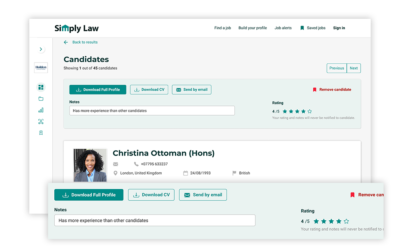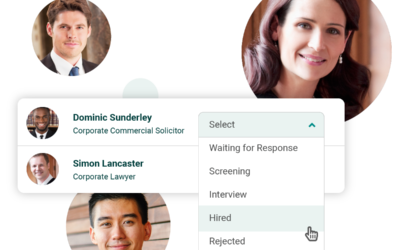We recently caught up with Claude Turcotte to discover 8 things to avoid in a virtual court hearing. This is what he said:
“Covid-19 has impacted every aspect of our daily routines. From how we shop for groceries to attending drive-by baby showers; it is no surprise Covid-19 is changing the way attorneys and court reporters are attending hearings. Across the world, judicial systems have switched to virtual court proceedings to ensure the health and safety of all participants.
Attorneys, court reporters, and even judges had to relearn courtroom etiquette for virtual hearings, but alas common mistakes are still made. Below are helpful tips on what you need to avoid the next time you attend a virtual court hearing:
Arriving Late
We are all familiar with the common metaphor “the early bird gets the worm,” but it is especially important to put this into practice when attending a virtual hearing. Always log on to the virtual platform at least 10 minutes prior to the start time. By giving yourself this extra cushion of time, you can handle any unexpected technology issues. Additionally, many virtual hearings will require a password to enter the room. You do not want to be the person that cannot sign into the hearing because you cannot find the password. This will increase your risk of not being present when your case is called, and any delay in the proceedings will most certainly be addressed by the judge.
Forgetting To Mute Your Microphone
The number one faux pas of virtual hearing etiquette is forgetting to mute your microphone when it is not your turn to speak. When your microphone is not muted, every little thing you do becomes amplified over the speakers to the other attendees. These sounds include typing on your keyboard, eating, answering a phone call, or speaking to someone in your household or office space. This distracting noise will not only make it difficult for others to focus on what is being discussed, but they will make the judge increasingly upset and you may be reprimanded for leaving your microphone on.
To avoid this, it is best practice to enter the virtual hearing with your microphone on mute, or if that is not possible, mute the microphone at your earliest opportunity upon entering. It is also important to ensure you diminish all distracting background noise by silencing any electronic devices that could emit sound unexpectedly (i.e. mobile phones, TV’s, radio). You will also want to make sure you are in a room separated from other members of your household or office.
Dressing Unprofessionally
Unfortunately, this is a tip which should not necessitate addressing, but continues to be a problem during virtual court hearings. We have all heard the embarrassing stories about people appearing on the virtual platforms scantily dressed. Surprisingly, this issue has been addressed by judges all over, and even made news headlines when a Miami judge observed lawyers wearing pyjamas, failing to wear a shirt, or even still in bed during virtual court hearings. There appears to be a misconception that because a court hearing is virtual, there is no formality to be followed. However, this is far from the truth. To preserve the professionalism and dignity of the judicial system, it is always important to wear proper courtroom attire for a virtual hearing.
Using Only One Computer Monitor
Limiting yourself to only one computer monitor during a court hearing may cause you to perform your job duties less efficiently. Andrew King, owner and director of Lennons Solicitors, a leading Legal 500 rated law firm in Buckinghamshire, England, highly recommends the use of dual monitors to increase your productivity and allow you to dedicate one screen solely to viewing the remote hearing and the speakers, whilst the other screen can be used to navigate the documents and for note taking. By taking notes during the hearing, you can ensure you have all correct information when drafting proposed orders after the hearing, or that you transcribe the court hearing accurately. Mr. King provides many helpful tips for remote hearings and the remote workplace in his not-for-profit book “The Virtual Workspace.”
Waiting Until Last Minute To Organise Exhibits
Evidence is a key aspect for many virtual hearings, and courts impose different requirements in how the evidence is submitted into record, stored, and shared. Many people thrive working under stressful conditions created by procrastination, but the organisation of exhibits should not be one of them.
When you have a hearing approaching, it is important to review the judge’s instructions on submitting evidence. These guidelines may be posted on the court division’s website, or you may need to call the judicial assistant. If you are required to share the exhibits via a screen share function, then you should have the exhibits opened and organised so it does not cause a delay when it is time to share your screen. Make sure the exhibits are labelled and you have familiarised yourself with the order of exhibits. You also may want to consider setting up a practice run with the attorney or court reporter to ensure everyone is on the same page.
Interrupting Other Participants
A difficulty of virtual court hearings is not being able to use nonverbal cues to indicate when a person is finished speaking or about to begin speaking. This increases the chance for participants to speak over each other which creates more noise than actual communication.
Many virtual platforms have a “raise your hand” feature which allows you to alert the other participants that you would like an opportunity to speak. If you do not have a “raise your hand” feature, you can count to three (in your head) after a person has finished speaking to ensure that the person is actually finished. Do not be flustered if you accidentally speak at the same time as someone else. If that happens, apologise for interrupting, and let the other person finish speaking prior to beginning.
Making Expressive Facial Movements
Attorney Joy Odom advises the importance of maintaining a poker face during virtual court proceedings. Specifically, Ms. Odom points out that during an in-person court hearing, many facial expressions may go unnoticed. However, during a virtual court hearing, your face will be the focus on other participants’ computer screens. Ms. Odom recommends asking a work colleague to monitor you during virtual court hearings to discreetly advise if you need to adjust your facial expressions. Unfortunately, if you are caught making visible facial reactions by the judge, your adversaries, or a witness, it can throw off your strategy and you may become an unwanted topic of discussion.
Recording Hearings Through Web Conferencing Technology
The use of web conference technology (i.e. Zoom, Skype, Google Meet) has skyrocketed since Covid-19 changed the way people attend meetings. Web conferencing technology has even made its way into the courthouse, albeit with some serious consequences. One of the biggest problems with recording on web conferencing technology is the lack of privacy. According to a report by The Washington Post, thousands of Zoom videos were exposed on the open web and accessible to the public. Many of these Zoom videos contained private and confidential details regarding different businesses or intimate lives of individuals.
Additionally, web conferencing technology should not be utilised for court hearings because it is easily accessible to the wrong people. We are all familiar with hackers breaking into Zoom hearings to play inappropriate content. While many court hearings can be open to the public, these hackers have forced many judges to no longer allow public online hearings.
A final and very important reason to not utilise web conferencing technology is due to its inability to record the entirety of the proceeding. When recording a hearing on web conferencing systems, you will not be able to include exhibits submitted outside of the web conferencing platform. This will make it increasingly difficult to include exhibits or any other important documents sent through e-mail or regular mail.
You also cannot add any notes and/or metadata when reviewing a recorded web conferencing hearing. Which makes the review process for reporters, admins, clerks, etc. more tedious when looking for specific incidences during a proceeding to replay for accuracy.
One Thing You Should Do – Invest In Reliable Recording Technology
MaestroVision offers court recording technology that allows users to record multiple screens and cameras simultaneously. Users can also upload court dockets, notes and metadata to ensure that recordings are properly maintained and organised. The ability to add notes and metadata to easily skip to a specific portion of the recording during replay makes this solution incredibly efficient.”
Who is Claude Turcotte?
Claude Turcotte is the President and CEO of MaestroVision.
Founded in 1998, they are a leading provider of advanced video solutions serving the Law Enforcement Broadcast Government, Education and Justice markets in the USA, Canada and Mexico.
How to save yourself headhunting time with the Talent Pool
In our latest guide, we’ll be introducing you to the Talent Pool, which is a brand-new feature for our recruiters; we’ll also demonstrate how using this can save you time and effort within your recruitment process. Saving candidates to your Talent Pool The...
Managing your response – job advert in need of a boost?
In our latest guide to the new features of your Recruiter account, we’ll be demonstrating how you can proactively manage your adverts’ response using our new Response Boosters. Should you wish to give a little extra push to one of your job adverts in order to attract...
Why it’s so important to keep your applicant pipeline up to date
In our latest guide to the new and improved features of your Recruiter account, we’ll be showing you how to access and manage your applications via your Jobs Area. Accessing your applications To view the applicants for a job, simply navigate to the Jobs Area...





